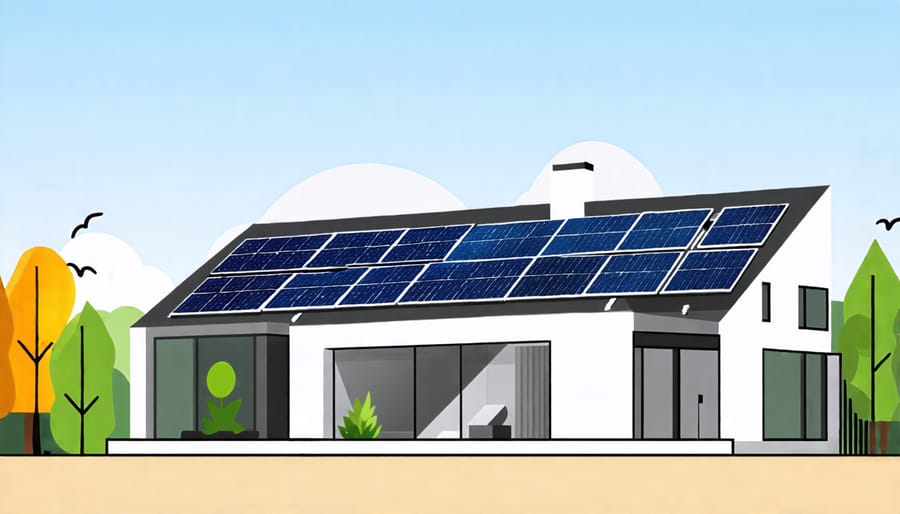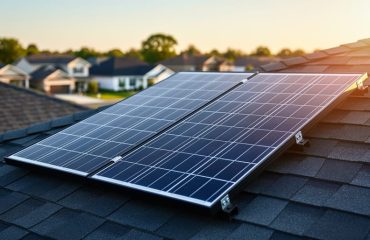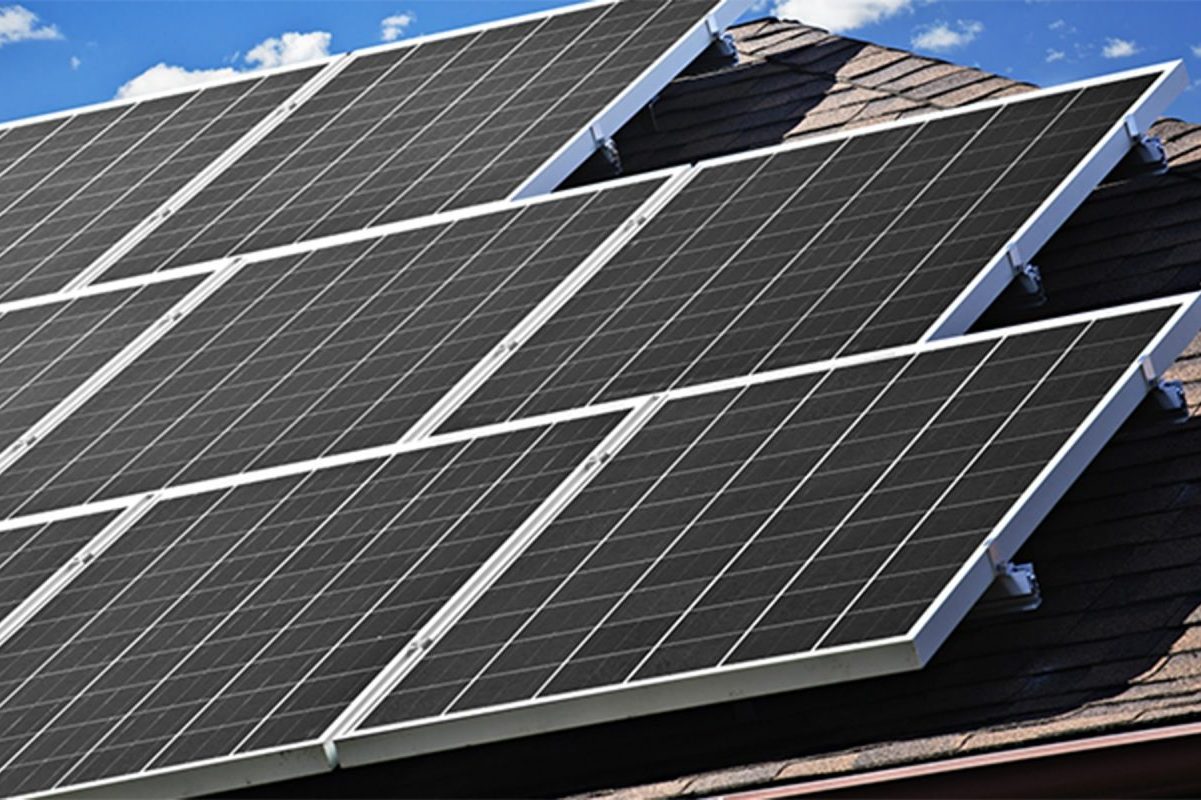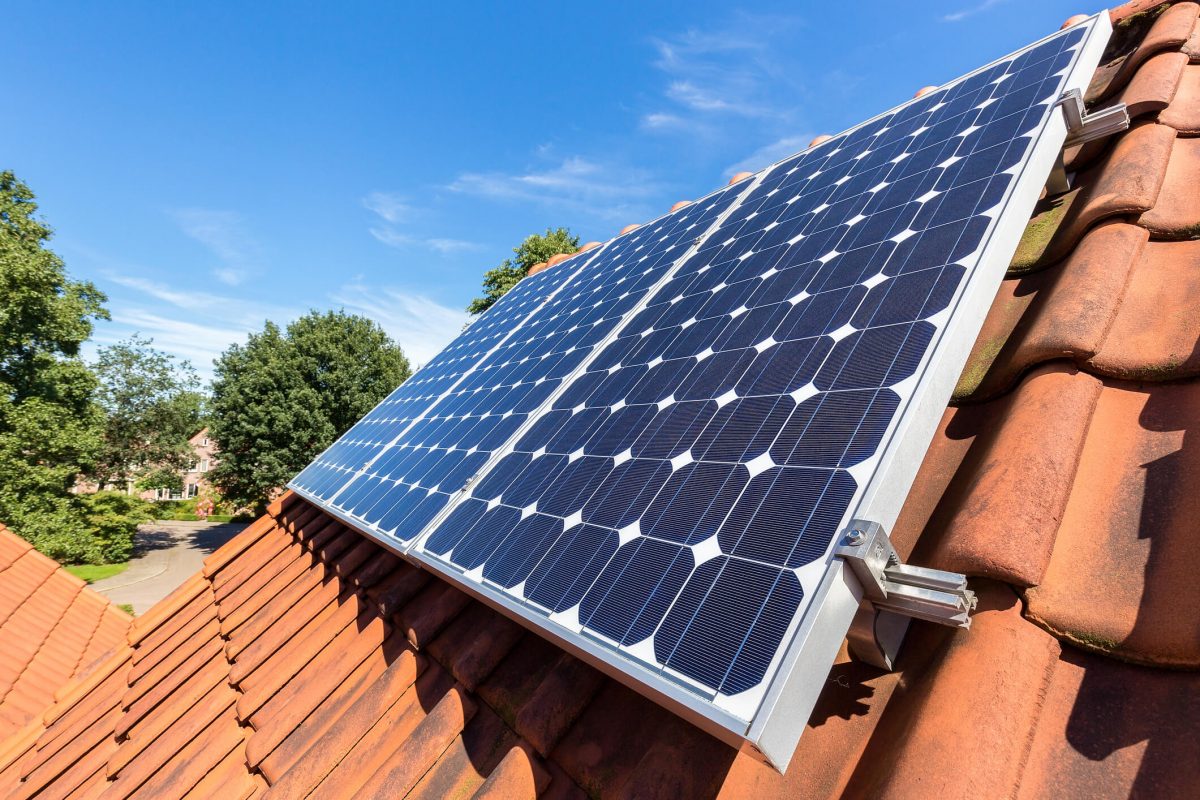Design your solar home system thoughtfully to maximize efficiency and return on investment. Size your system based on your energy needs, roof space, and budget. Choose high-quality panels, inverters, and batteries from reputable manufacturers to protect your investment. Work with an experienced installer to ensure proper system design, permitting, and interconnection. With smart planning, going solar empowers you to slash bills, increase home value, and minimize your carbon footprint.
Assessing Your Home’s Solar Potential
Roof Orientation and Angle
To maximize your solar home system’s energy production, consider your roof’s orientation and angle. In the northern hemisphere, south-facing roofs receive the most direct sunlight throughout the day. The optimal tilt angle for your solar panels depends on your latitude, but a general rule of thumb is to set the tilt equal to your location’s latitude. This ensures the best year-round performance. However, even if your roof isn’t perfectly south-facing or at the ideal angle, you can still benefit from solar energy. Modern solar panels are designed to capture sunlight effectively from various angles, so don’t let a less-than-perfect roof orientation discourage you from going solar.

Shading Analysis
Nearby trees, buildings, and other obstructions can significantly reduce solar panel efficiency by casting shadows on the panels throughout the day. Even partial shading can have a substantial impact on energy production. When designing your solar home system, it’s crucial to consider the surrounding environment and potential sources of shade. Conducting a thorough shading analysis helps determine the optimal placement for your solar panels, ensuring they receive maximum sunlight exposure. By strategically positioning your panels and, if necessary, trimming or removing obstructive vegetation, you can maximize your system’s performance and reap the full benefits of clean, renewable energy.
Local Climate Considerations
Local weather patterns, temperature, and precipitation significantly impact solar system performance. Regions with abundant sunshine and minimal cloud cover are ideal for solar, as they provide consistent energy production. High temperatures can slightly reduce panel efficiency, while cooler climates often yield better performance. Snow and heavy rainfall can temporarily obstruct panels, but proper installation ensures quick runoff for optimal energy generation. Assessing your area’s climate is crucial for accurately estimating your system’s output and determining the most suitable panel orientation and mounting setup for your home.
Sizing Your Solar Panel Array
Analyzing Energy Bills
To analyze your energy bills and determine your home’s typical energy consumption, gather your utility bills from the past 12 months. Look for the total kilowatt-hours (kWh) consumed each month, which is a measure of your electricity usage. Add up the kWh values for all 12 months and divide by 12 to calculate your average monthly energy consumption. This figure will give you a baseline understanding of your home’s energy needs, which is crucial for designing an appropriately sized solar home system. Keep in mind that your energy consumption may vary throughout the year due to seasonal changes, so it’s essential to consider the full year’s data for a more accurate assessment.
Factoring in Efficiency
When designing your solar home system, it’s crucial to consider the efficiency ratings of the solar panels you choose. Panel efficiency ratings indicate how well a panel converts sunlight into usable electricity. Higher efficiency ratings mean you’ll need fewer panels to generate the same amount of power, saving you space and potentially reducing installation costs. While high-efficiency panels may have a higher upfront cost, they can be a smart investment in the long run, especially if you have limited roof space. When comparing panels, look for those with efficiency ratings above 20% for optimal performance and energy production. Incorporating efficient panels into your solar home system design will help you maximize your energy output and minimize your carbon footprint.

Choosing the Right Inverter
String Inverters
String inverters are a popular choice for solar home systems, converting the direct current (DC) electricity generated by solar panels into alternating current (AC) electricity that can be used by household appliances. These inverters work by connecting solar panels in a series, creating a single string of panels that feeds into the inverter. The main benefits of string inverters include their cost-effectiveness, reliability, and ease of installation. However, they may not be as efficient as other inverter types when panels are exposed to different levels of sunlight or shading, as the entire string’s output is limited by the lowest-performing panel. Despite this drawback, string inverters remain a reliable and affordable option for many homeowners looking to harness the power of the sun.
Microinverters and Power Optimizers
Microinverters and power optimizers are innovative devices that attach to each solar panel in your array, offering more flexibility and efficiency compared to traditional string inverters. By converting DC to AC power at the panel level, microinverters allow your system to operate independently, minimizing the impact of shading or performance issues on individual panels. Power optimizers provide similar benefits by conditioning the DC power before sending it to a central inverter. These per-panel devices ensure that your solar home system performs optimally, even if some panels are shaded or facing different directions. They also provide panel-level monitoring, allowing you to track the performance of each panel and quickly identify any issues. While they may add some upfront cost, microinverters and power optimizers can significantly increase your system’s overall efficiency and energy production.
Battery Backup and Energy Storage
Benefits of Batteries
Batteries are an essential component of a solar home system, enabling off-grid operation and protecting against power outages. By storing excess energy generated during the day, batteries provide a reliable source of electricity at night or during periods of low sunlight. This means that even if the grid goes down, your home can still have access to power, ensuring your essential appliances and devices remain functional. Batteries also help to smooth out fluctuations in solar energy production, providing a consistent and stable power supply. With the right battery setup, you can enjoy the benefits of clean, renewable energy while maintaining the reliability and convenience of a traditional power grid. Investing in a solar home system with batteries is a smart choice for energy independence and peace of mind.
Sizing Battery Storage
To size your battery storage, consider your daily energy consumption and desired backup duration. Multiply your daily kWh usage by the number of days you want to maintain power during an outage. For example, if you use 30 kWh per day and want a 3-day backup, you’ll need a 90 kWh battery. However, battery capacity is typically specified in amp-hours (Ah). To convert kWh to Ah, divide the kWh value by the battery voltage (e.g., 48V). In this case, a 90 kWh battery would be approximately 1,875 Ah at 48V. Keep in mind that batteries should not be discharged below 50% to maintain longevity, so double the calculated capacity for your final battery size. Work with a professional to fine-tune your battery sizing based on your specific needs and budget.
Permitting and Installation
Navigating Permits
Navigating the solar permitting process can seem daunting, but working with a qualified installer makes it a breeze. These professionals are well-versed in local regulations and will handle the paperwork on your behalf. They’ll ensure your solar home system design meets all necessary codes and standards, saving you time and stress. With their expertise, you can focus on the exciting aspects of going solar, like reducing your carbon footprint and saving money on energy bills, while they take care of the technical details. Don’t let the permitting process hold you back from embracing clean, renewable energy for your home.
Professional Installation
While solar home systems offer numerous benefits, proper installation is crucial for safety, performance, and longevity. To ensure your system is installed correctly, it’s essential to work with experienced, certified professionals. Certified installers have the expertise to design and implement a solar array that meets your home’s specific needs while adhering to local building codes and regulations. They can also help you navigate the permitting process and ensure your system is connected to the grid safely and legally. By relying on professional installation, you can have peace of mind knowing your solar home system will operate efficiently and reliably for years to come.

Monitoring and Maintenance
Performance Monitoring
Performance monitoring is a crucial aspect of solar home system design, allowing homeowners to track their energy production and consumption patterns. Monitoring systems provide real-time data on solar panel performance, battery storage levels, and household energy usage. This information empowers homeowners to optimize their energy consumption habits, identify potential issues, and maximize the benefits of their solar investment. By analyzing historical data, homeowners can also gain valuable insights into seasonal trends and make informed decisions about future energy management strategies. With the help of user-friendly mobile apps and web interfaces, monitoring the performance of a solar home system has never been easier or more accessible.
Routine Maintenance
Regular cleaning of solar panels ensures optimal performance. Homeowners can rinse panels with a garden hose to remove dirt and debris, but avoid using abrasive materials or harsh chemicals. Trim nearby trees to prevent shading and fallen leaves. Monitor energy output and inspect wiring for signs of damage. If output drops significantly or damage is found, contact a professional solar technician for repairs. Schedule an annual maintenance check with your installer to identify and address any issues promptly. By performing these simple tasks and working with qualified professionals when needed, you can keep your solar home system running efficiently for years to come.
Conclusion
Solar home systems offer a sustainable, cost-effective solution for homeowners looking to reduce their energy bills and environmental impact. By harnessing the power of the sun, these systems provide clean, renewable energy that can meet a significant portion of your household’s electricity needs. With proper design considerations, including panel orientation, inverter selection, and battery storage, you can optimize your system’s performance and reliability. While the upfront costs may seem daunting, the long-term financial benefits, such as reduced utility bills and potential tax incentives, make solar an attractive investment. As technology continues to advance and costs decline, solar home systems are becoming increasingly accessible to homeowners. By taking the first step towards solar energy, you can join the growing movement of individuals committed to a cleaner, more sustainable future. Consider exploring your solar options today and discover how you can make a positive impact while saving money in the long run.









